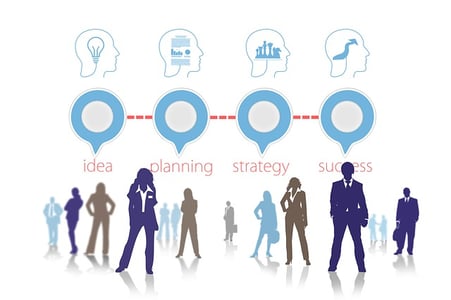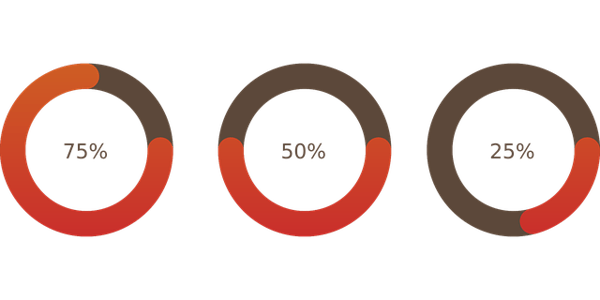Organizational design is the set of processes that company leaders follow to create connected systems that allow individuals and teams of individuals to work toward unified goals. This is a complex task that can look very different depending on the needs of your organization.
In this overview, we’ll cover:
- Why organizational design is so important
- What organizational design looks like
- When you should consider an organizational redesign
- The process involved in organizational redesign
This piece will provide you with important foundational knowledge about organizational design.
Why is organizational design important?
Organizational design is the basis on which a company’s operations are founded. It creates reporting structures, accountabilities, and relationships between various parts of the organization. It includes developing management structures, creating functional teams, and articulating roles and responsibilities.
Good organizational design sets a company up for success from the start. A well-executed redesign can help a business navigate a corporate restructuring or take advantage of emerging opportunities.
What organizational design really looks like
Many people equate organizational design with organizational charts. This isn’t entirely incorrect. Robust organizational charts are important output and input documents during the organizational design and redesign process. They provide important current-state insights into the current organizational structure and can reveal gaps and inefficiencies.
Organizational charts are also exceptionally helpful during and after a design/redesign process. They provide invaluable information about the structure or proposed structure of the company.
However, the organizational design process is much more involved. It requires gaining an understanding of the following six elements and how these can be integrated to design an efficient, effective organizational structure.
1. Company culture
The combination of management styles, communication, values, and other factors impact how members of the organization work together.
2. Talent
The skills required for each role, team, and department to successfully contribute to meeting the company’s objectives. This can represent both existing and projected needs.
3. Systems
The administrative processes that are followed within and between different organizational areas include:
- Resource allocation
- Report generation
- Employee incentives
These often illustrate how information flows from one business area to another and how talent is rewarded.
4. Processes
The operational processes and technologies used to complete necessary tasks.
5. Strategy
The purpose of the organization’s existence, factors that differentiate it from competitors, and its strengths.
6. Organizational Structure
The current or proposed hierarchy and headcount plan of people and teams within a business.
Only after these elements, as well as organizational objectives and available resources, are understood fully is it possible to engage in the organizational design process.
Signs it’s time for an organizational redesign
How do you know when it’s time to engage in an organizational redesign? The situations detailed below indicate that a redesign could be required.
There is a significant change in goals or strategy

All organizations evolve. Your business may adopt new goals or adjust its strategies to match a changing organizational mission. This triggers an organizational redesign that is ambitious and centers on a future vision for the company. This version of a redesign usually begins with a current state analysis of the five elements that impact organizational structure. Then, stakeholders can decide what needs to be changed and what can be kept if it already aligns with the new organizational vision. Ultimately, these decisions usually lead to new operational procedures and systems.
There are internal and external triggers
Sometimes, significant events from inside or outside of your organization will trigger the redesign process. One example of an external trigger is a regulatory change that requires your company to make significant procedural changes. Another example would be the emergence of a disruptive new competitor.
There are some common internal factors as well. One of these is loss of revenue leading to the need to create a leaner organization. Another is adopting a new technology stack.
It may be necessary to engage in an organizational redesign in response to a trigger event. The drawback is that the process can be reactive. Because of this, the long-term results may not be as desirable. When this happens, it may become necessary to revisit the redesign process to deal with unanticipated results.
Developing inefficiencies
This final trigger is not as abrupt as the other two. Instead, this is something that occurs over time. Simply put, gradual changes and developments can cause conflicts in processes and render certain elements of the organizational structure inefficient.
When this happens to the extent that it impacts progress toward organizational goals, that signals the need for a review and redesign if needed.
Six well known organizational design models
The theory of organizational design recognizes that every organization contains practices that are executed by various units with the goal of creating desired outcomes. All of these are interconnected. So when there is a change in one area, that can have a ripple effect. Organizational design models were created to document these frameworks.
However, each of these design models prioritizes something different. This depends on what a particular model defines as being most important.
Here are six of the most well-known models and what each one prioritizes:
1. Galbraith Star Model
This prioritizes talent, structure, incentives, process, and strategy.
2. McKinsey 7-S
Here the main focus is on competencies, shared value, structure, systems, style, and strategy.
3. Burke Litwin
This is an organizational design model that centers on organizational culture, systems, company mission, management style, departmental culture, needs and values at the individual level, external impacts, and leadership.
All three of these models were designed with the assumption that organizations would generally be stable, singular, and focused on a common set of goals. However, some current and future organizations may need models with a bit more flexibility.
For example, the three models above aren’t going to work well with joint ventures, partnerships, and other collaborations between different autonomous businesses. They may not even be a good fit for organizations with different divisions or geographical locations that operate largely independently of one another but must also retain some level of cooperation.
Here are some newer models that reflect the need for a more agile approach to organizational design.
4. McMillan’s Fractal Web
The organization is viewed as a living entity. It grows, changes, and adapts in response to external changes.
5. Holonic Enterprise Model
Organizational talent is viewed as being autonomous but working in a coordinated fashion to complete finite projects or meet short-term objectives.
6. Ken Wilber’s AQAL Model
Uses the discipline of developmental psychology while examining the organization horizontally and vertically. This includes considering both individual and collective perspectives.
Selecting the right model
Organizations may choose to adopt an existing model or combine different parts of existing models for a personalized approach.
Organizational review with gap analysis
Most design models have an initial process that involves analyzing the current structure, processes, etc. This generally involves looking at each component of the organizational framework, documenting how it works now, and identifying gaps. Those gaps could be shortcomings that are preventing current goals from being met or that will make it impossible to meet new goals.
There are different methods and instruments that can be used to complete this part of the process. For example:
- Internal audits
- Surveys
- Process reviews
- Focus groups
- SWOT analysis
While gathering feedback and reviewing the current state from a human perspective is valuable, it’s also important to collect organizational data and define some clear metrics that are objective.

Designing workflows
These are the various inputs, outputs, and outcomes that flow through the organization. Some traditional design models tend to focus on more tangible aspects of this, including operational processes, structure, and systems.
Other models prioritize culture, employee engagement, and elements that are not as tangible. Fortunately, modern design approaches allow all contributing elements to be considered.
Here’s an example. You may design a series of workflows to make tasks work more efficiently as they involve multiple teams. This would involve making changes to systems, organizational structure, and processes. However, those changes are going to be most effective when they are also integrated with changes that lead to better communication and cultural changes that adjust how workers engage with other teams.
Final: Creation of organizational plan and deliverables
For an organizational design to be productive, it must result in deliverables that can be used as an educational tool and roadmap. One of the most important of these is an in-depth organizational chart that identifies organizational hierarchies, responsibilities, and important connections. Another step is collaboration through sharing the org chart to internal or external stakeholders.
Many organizations make Functionly a part of their organizational design process - give it a go today for free.




